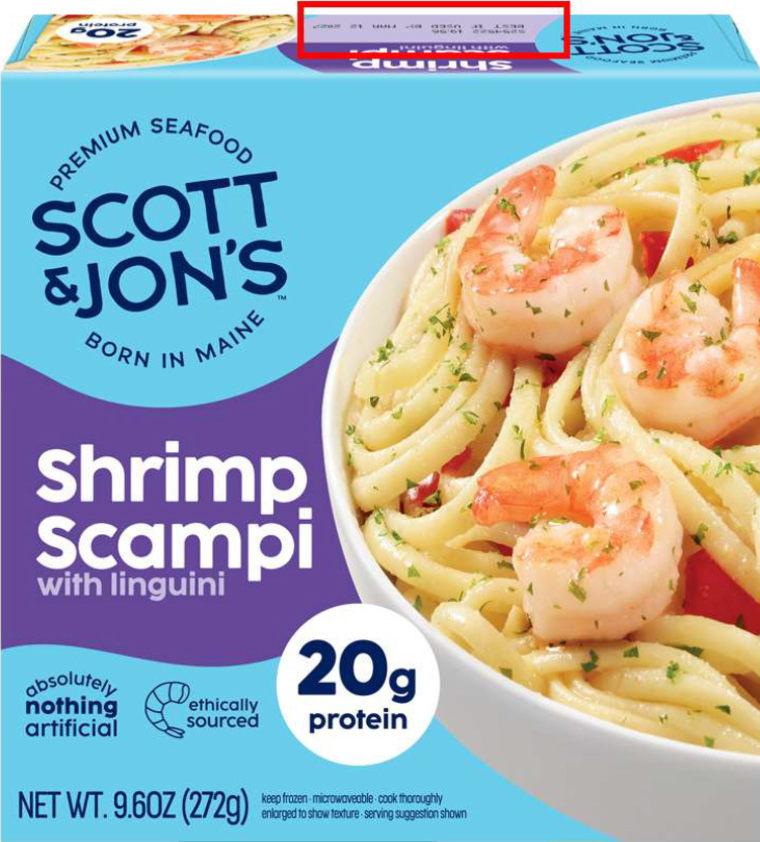More precooked pasta meals have been recalled due to possible links to a sprawling listeria outbreak that has led to four deaths.
The outbreak, which was first announced in June, has led to a wave of recalls of ready-to-eat pasta meals that use pasta from food supplier Nate’s Fine Foods, according to the Food and Drug Administration. Some of the meals were distributed by FreshRealm, a food service company. Others were sold at major supermarket chains.
Complicating matters, the Agriculture Department said Monday that two other FreshRealm meals contained spinach that was possibly contaminated with listeria — but these meals had no ties to the ongoing outbreak.
Twenty cases of listeria have been reported in 15 states and 19 people have been hospitalized, according to the FDA. There have been four deaths and one fetal loss, according to the Centers for Disease Control and Prevention.
Cases have been reported in 14 states: California, Florida, Illinois, Indiana, Louisiana, Michigan, Minnesota, Missouri, Nevada, North Carolina, Ohio, South Carolina, Texas and Utah.
Here’s what to know about the outbreak.
What foods are affected?
In September, the FDA announced that linguine from Nate’s Fine Foods had tested positive for the strain of listeria causing the outbreak.
On Sept. 25, Nate’s Fine Foods recalled several lots of its precooked pastas. Five days later, the company expanded the recall to more precooked dishes, including fettuccine, linguine and bowtie pasta, the FDA said.
Nate’s Fine Foods doesn’t sell to consumers but to companies that use its ingredients in their prepared meals, including FreshRealm and several supermarket chains. So far, recalled pasta products include:
- Trader Joe’s Cajun Style Blackened Chicken Breast Fettucine Alfredo 16-oz plastic tray packages
- Demer Food Group’s Scott & Jon’s Shrimp Scampi with Linguini Bowls 9.6-oz


A spokesperson for Nate’s Fine Foods referred NBC News to a statement on the company’s website, which says in part: “Out of an abundance of caution, we are voluntarily recalling select products after being notified of a potential link to a multistate outbreak of Listeria monocytogenes.”
“We wouldn’t necessarily think of pasta and listeria going hand in hand,” said Barbara Kowalcyk, director of the Institute for Food Safety and Nutrition Security at George Washington University.
“However, once the pasta has been cooked and it’s put into a meal, any ready-to-eat meal is at risk of listeria.”
What about the spinach?
Separately, the USDA’s Food Safety and Inspection Service said Monday that two other FreshRealm meals under the HelloFresh label were affected by a frozen spinach recall: A 10.1-ounce of HelloFresh Ready Made Meals Cheesy Pulled Pork Pepper Pasta and 10-ounce containers of HelloFresh Ready Made Meals Unstuffed Peppers with Ground Turkey.
A spokesperson for FreshRealm said in a statement that the listeria strain found in the spinach wasn’t related to any outbreaks and the company was not aware of any illnesses linked to the spinach.
How did listeria get into these products?
Listeria is naturally found in soil, animal meat, vegetables, fruits and raw substances. These can be brought into food processing plants, where listeria can spread and cause contamination.
When listeria is brought into processing plants it can grow and form a colony. Listeria can form a biofilm, protecting it from sanitizers, making it more difficult to get rid of it.
Ben Chapman, a food safety specialist and professor at North Carolina State University, said materials being brought into processing facilities are a common route of contamination.
Listeria is difficult to track, and outbreaks are not often traceable to a single point.
What are the symptoms of listeria infection?
Eating or drinking something contaminated with listeria bacteria can lead to an infection called listeriosis.
Once inside the body, listeria can grow in the gut, causing gastrointestinal symptoms including diarrhea, upset stomach and vomiting, according to the Mayo Clinic. Symptoms typically start within a day of eating contaminated food and last for a few days. These listeria infections are often mild.
Invasive listeriosis — when listeria spreads to other parts of the body — can cause more severe illness. Listeria infection in the blood can lead to sepsis, which can be deadly. If listeria enters the brain or spinal cord, it can cause problems with balance, difficulty moving one side of the body, hearing loss, seizures or death.
These more serious symptoms often start within two weeks of eating contaminated food but may not begin for up to two months, the Mayo Clinic says.
Pregnant women, people over 65 and people with weakened immune systems have a higher risk of invasive listeriosis.
Why are listeria outbreaks so hard to track?
According to the CDC, the first recorded case in this outbreak was more than one year ago, in August, 2024. The most recent case was last month.
Because listeria symptoms can take up to 10 weeks to emerge after eating the contaminated food, it may be difficult for experts to pinpoint and track when cases are happening and what’s causing them.
People may not see a doctor if their symptoms are not severe enough. (The CDC notes for this outbreak and other foodborne illness outbreaks that the true number of cases is likely higher than reported.)
Chapman said investigations can often take months or years to conduct.
Finding listeria is in a manufacturing plant can be like looking for a needle in a haystack.
“If you think about thousands of square feet of food manufacturing facility, trying to find where this bacteria has established itself, you’re probably looking at tens of thousands little nooks and crannies that this could be established in,” he said.
Kowalcyk noted that food safety surveillance in the U.S. has taken a hit, as programs have been scaled back or receive insufficient funding.
“Things have gotten even worse in the past year,” she said.
“I anticipate that we will see fewer outbreaks,” she said, “because if you don’t look for something, or can’t look for something because of lack of resources, you don’t find it.”
She said that future outbreaks will be much larger, because they will be allowed to grow without anyone knowing.
“When we talk about outbreaks, we’re talking about the tip of the iceberg,” she said.
